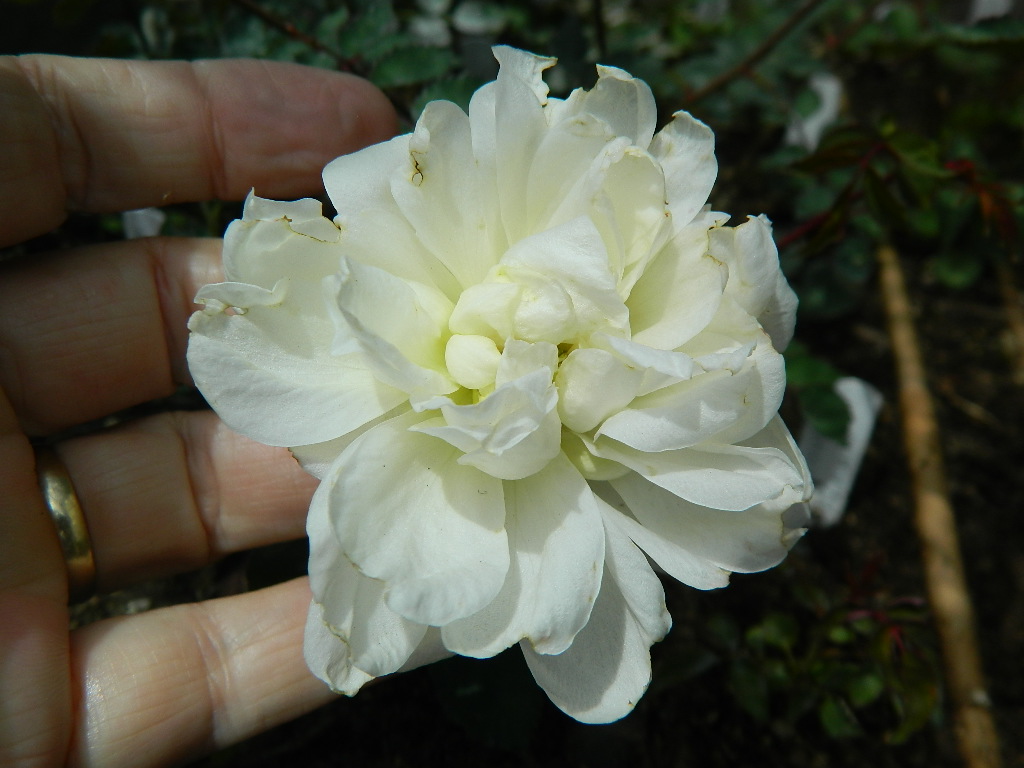The Banksiaes are in bloom in my area, so I wanted to make another pitch for them.
Anyone who has inhaled the delicious violet perfume of R. banksiae banksiae will appreciate what a fine addition this scent could be to what we already have. And R. banksiae lutea may be our best shot at a yellow dwarf Polyantha-type plant.
Isaac Oldaker, gardener to Sir and Lady Banks, offered his plan for forcing R. banksiae.
"I also discovered, this season, a method of making small plants of the Rosa Banksiae blow well in pots, after the whole blossom of the trees against the wall had ceased, and as this is likely to be successful, it is without doubt worthy of notice.
“In the beginning of February, I put several small plants of the Rose in pots, on the back bed, in the house in which I forced flowers for Lady BANKS, cutting the plants down to within a few buds of their roots. The heat of the house was from fifty-four to sixty degrees of FAHRENHEIT’S thermometer. The plants made strong shoots, and by the middle of March, their young branches were about eighteen inches long: at this time they were taken out of the flower-house and placed under a Melon-frame, the glasses of which were taken off in the day, and only put on at night, to exclude frosts: no heat being applied to them in this situation, the change of climate operated so as not only to check their growth, but to put them artificially into a state of rest, as in the winter; the young wood having been previously well ripened with the effect of the summer warmth, they broke out into blossom by the end of July, and most of them were completely covered with flowers.”
http://bulbnrose.x10.mx/Roses/breeding/SabineBanksiae1822.html
This plan may be useful in England, for folks who are blessed with greenhouses. I wonder if the same result might be had with a retired refrigerator. Pot the plants as Oldaker described, cut back, let shoots grow to the desired length, then chill in the fridge set to a low (but not freezing) temperature.
The advantage of this approach is that flowering R. banksiae could be made available for breeding at any time needed. Cross the yellow form with ‘Sunshine’ or ‘Tip-Top’, for example, or the white with a white or pale Tea, China, etc.
